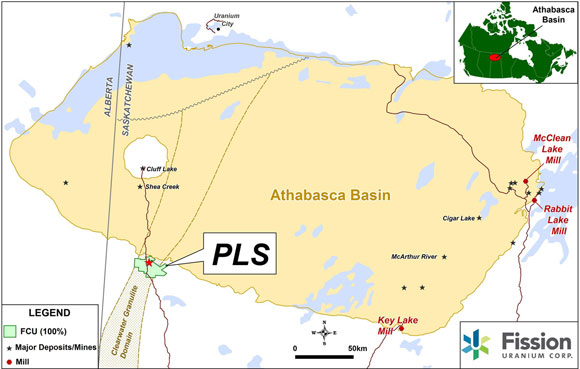MLPs: A Simple Way to Put More Cash in Your Pocket
Source: Martin Hutchinson, Money Morning (12/1/11)
"These days, high-yielding investments are a must-have for investors. This market is simply too volatile to be taking long shots."
These days, high-yielding investments are a must-have for investors.
It's nonnegotiable. This market is simply too volatile to be taking long shots. You have to be prepared for the next potential market dip, and that means having a steady stream of "bonus" cash coming in on a regular basis.
Unfortunately, interest rates right now are absurdly low, junk bonds are too risky, and high-yielding stocks are few and far in between.
That leaves just one place to look for serious income: Master Limited Partnerships (MLPs).
MLPs, for those not familiar, are tax-advantaged limited partnerships whose units are traded on exchanges just like common shares of stock.
However, a key difference between MLPs and stocks is that MLPs pay very high yields—typically 5% to 12%. This is because U.S. law mandates that they pass most of their income on to unit holders.
Still, being limited partnerships, their ordinary shareholders do not suffer unlimited liability (as they would in a regular partnership) and so can treat their investment as if it was in an ordinary company.
However, because their income is not taxed at the partnership level, the government limits the kinds of businesses that can use the MLP structure. It's restricted primarily to operations engaged in the extraction, storage, and transportation of energy commodities, which are deemed essential to the U.S. economy and national security.
As a result, MLPs derive 90% of their income from natural resources—primarily oil, natural gas, and coal production and transportation.
Two especially attractive businesses for the MLP structure are pipelines and ownership of existing oil resources. Pipelines generally charge a fixed fee per unit of product carried, so they earn a steady return that can safely be paid out to investors. Existing oil and gas fields incur no exploration costs and only limited production costs. Meanwhile, their exposure to oil and gas prices can be hedged in the futures market, so they, too, can safely pay a fixed dividend to investors.
MLPs economically bear more resemblance to fixed income investments than to regular shares. However, the drawback is generally very little upside potential, except through variation in oil and gas prices.
Additionally, if the MLP is invested in a finite pool of oil or gas, there is a finite lifetime to it, and the income to investors may be accompanied by a gradual loss of principal. Fortunately, MLP tax treatment accounts for this, and so a large portion of each year's dividends is considered a return of principal. That may have advantages to some investors holding MLPs in taxable accounts.
MLPs are generally not very risky, and bear a strong resemblance to each other, so even though there are two exchange-traded funds (ETFs) that invest in MLPs—the Alerian MLP ETF and JP Morgan Alerian MLP Index ETN—there does not seem to be much advantage.
Instead, you're better off investing in high-yielding MLPs.
-Money Morning
It's nonnegotiable. This market is simply too volatile to be taking long shots. You have to be prepared for the next potential market dip, and that means having a steady stream of "bonus" cash coming in on a regular basis.
Unfortunately, interest rates right now are absurdly low, junk bonds are too risky, and high-yielding stocks are few and far in between.
That leaves just one place to look for serious income: Master Limited Partnerships (MLPs).
MLPs, for those not familiar, are tax-advantaged limited partnerships whose units are traded on exchanges just like common shares of stock.
However, a key difference between MLPs and stocks is that MLPs pay very high yields—typically 5% to 12%. This is because U.S. law mandates that they pass most of their income on to unit holders.
Still, being limited partnerships, their ordinary shareholders do not suffer unlimited liability (as they would in a regular partnership) and so can treat their investment as if it was in an ordinary company.
However, because their income is not taxed at the partnership level, the government limits the kinds of businesses that can use the MLP structure. It's restricted primarily to operations engaged in the extraction, storage, and transportation of energy commodities, which are deemed essential to the U.S. economy and national security.
As a result, MLPs derive 90% of their income from natural resources—primarily oil, natural gas, and coal production and transportation.
Two especially attractive businesses for the MLP structure are pipelines and ownership of existing oil resources. Pipelines generally charge a fixed fee per unit of product carried, so they earn a steady return that can safely be paid out to investors. Existing oil and gas fields incur no exploration costs and only limited production costs. Meanwhile, their exposure to oil and gas prices can be hedged in the futures market, so they, too, can safely pay a fixed dividend to investors.
MLPs economically bear more resemblance to fixed income investments than to regular shares. However, the drawback is generally very little upside potential, except through variation in oil and gas prices.
Additionally, if the MLP is invested in a finite pool of oil or gas, there is a finite lifetime to it, and the income to investors may be accompanied by a gradual loss of principal. Fortunately, MLP tax treatment accounts for this, and so a large portion of each year's dividends is considered a return of principal. That may have advantages to some investors holding MLPs in taxable accounts.
MLPs are generally not very risky, and bear a strong resemblance to each other, so even though there are two exchange-traded funds (ETFs) that invest in MLPs—the Alerian MLP ETF and JP Morgan Alerian MLP Index ETN—there does not seem to be much advantage.
Instead, you're better off investing in high-yielding MLPs.
-Money Morning



























































